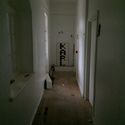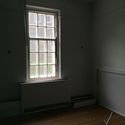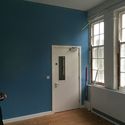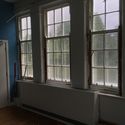
2060-1_1415
General setting shot of Buildings 24, 25 and 26
General setting shot of Buildings 24, 25 and 26
[ DOWNLOAD] (Full Resolution) right-click and save file
|
2060-1_1415
General setting shot of Buildings 24, 25 and 26 |
JPG
2060-1_1415
General setting shot of Buildings 24, 25 and 26
General setting shot of Buildings 24, 25 and 26
[ DOWNLOAD] (Full Resolution) right-click and save file
|
3.62 Mb
|

2060-1_1416
General setting shot of Buildings 24, 25 and 26
General setting shot of Buildings 24, 25 and 26
[ DOWNLOAD] (Full Resolution) right-click and save file
|
2060-1_1416
General setting shot of Buildings 24, 25 and 26 |
JPG
2060-1_1416
General setting shot of Buildings 24, 25 and 26
General setting shot of Buildings 24, 25 and 26
[ DOWNLOAD] (Full Resolution) right-click and save file
|
3.50 Mb
|

2060-1_1417
General setting shot of Buildings 24 and 25
General setting shot of Buildings 24 and 25
[ DOWNLOAD] (Full Resolution) right-click and save file
|
2060-1_1417
General setting shot of Buildings 24 and 25 |
JPG
2060-1_1417
General setting shot of Buildings 24 and 25
General setting shot of Buildings 24 and 25
[ DOWNLOAD] (Full Resolution) right-click and save file
|
3.88 Mb
|

2060-1_1418
General view External N elevation
General view External N elevation
[ DOWNLOAD] (Full Resolution) right-click and save file
|
2060-1_1418
General view External N elevation |
JPG
2060-1_1418
General view External N elevation
General view External N elevation
[ DOWNLOAD] (Full Resolution) right-click and save file
|
3.88 Mb
|

2060-1_1419
General view External W elevation
General view External W elevation
[ DOWNLOAD] (Full Resolution) right-click and save file
|
2060-1_1419
General view External W elevation |
JPG
2060-1_1419
General view External W elevation
General view External W elevation
[ DOWNLOAD] (Full Resolution) right-click and save file
|
4.21 Mb
|

2060-1_1420
General view External W elevation
General view External W elevation
[ DOWNLOAD] (Full Resolution) right-click and save file
|
2060-1_1420
General view External W elevation |
JPG
2060-1_1420
General view External W elevation
General view External W elevation
[ DOWNLOAD] (Full Resolution) right-click and save file
|
3.83 Mb
|

2060-1_1421
General view External S elevation
General view External S elevation
[ DOWNLOAD] (Full Resolution) right-click and save file
|
2060-1_1421
General view External S elevation |
JPG
2060-1_1421
General view External S elevation
General view External S elevation
[ DOWNLOAD] (Full Resolution) right-click and save file
|
3.92 Mb
|

2060-1_1422
Detail view External S elevation
Detail view External S elevation
[ DOWNLOAD] (Full Resolution) right-click and save file
|
2060-1_1422
Detail view External S elevation |
JPG
2060-1_1422
Detail view External S elevation
Detail view External S elevation
[ DOWNLOAD] (Full Resolution) right-click and save file
|
3.95 Mb
|

2060-1_1423
General view External W elevation
General view External W elevation
[ DOWNLOAD] (Full Resolution) right-click and save file
|
2060-1_1423
General view External W elevation |
JPG
2060-1_1423
General view External W elevation
General view External W elevation
[ DOWNLOAD] (Full Resolution) right-click and save file
|
3.95 Mb
|

2060-1_1424
General view External E elevation
General view External E elevation
[ DOWNLOAD] (Full Resolution) right-click and save file
|
2060-1_1424
General view External E elevation |
JPG
2060-1_1424
General view External E elevation
General view External E elevation
[ DOWNLOAD] (Full Resolution) right-click and save file
|
3.85 Mb
|

2060-1_1425
General view External S elevation
General view External S elevation
[ DOWNLOAD] (Full Resolution) right-click and save file
|
2060-1_1425
General view External S elevation |
JPG
2060-1_1425
General view External S elevation
General view External S elevation
[ DOWNLOAD] (Full Resolution) right-click and save file
|
4.09 Mb
|

2060-1_1426
General view External E elevation
General view External E elevation
[ DOWNLOAD] (Full Resolution) right-click and save file
|
2060-1_1426
General view External E elevation |
JPG
2060-1_1426
General view External E elevation
General view External E elevation
[ DOWNLOAD] (Full Resolution) right-click and save file
|
4.02 Mb
|

2060-1_3076
General view S external elevation
General view S external elevation
[ DOWNLOAD] (Full Resolution) right-click and save file
|
2060-1_3076
General view S external elevation |
JPG
2060-1_3076
General view S external elevation
General view S external elevation
[ DOWNLOAD] (Full Resolution) right-click and save file
|
2.25 Mb
|

2060-1_3077
General view S external elevation, E end
General view S external elevation, E end
[ DOWNLOAD] (Full Resolution) right-click and save file
|
2060-1_3077
General view S external elevation, E end |
JPG
2060-1_3077
General view S external elevation, E end
General view S external elevation, E end
[ DOWNLOAD] (Full Resolution) right-click and save file
|
2.27 Mb
|

2060-1_3078
General view S external elevation
General view S external elevation
[ DOWNLOAD] (Full Resolution) right-click and save file
|
2060-1_3078
General view S external elevation |
JPG
2060-1_3078
General view S external elevation
General view S external elevation
[ DOWNLOAD] (Full Resolution) right-click and save file
|
2.49 Mb
|

2060-1_3079
Oblique view E external elevation
Oblique view E external elevation
[ DOWNLOAD] (Full Resolution) right-click and save file
|
2060-1_3079
Oblique view E external elevation |
JPG
2060-1_3079
Oblique view E external elevation
Oblique view E external elevation
[ DOWNLOAD] (Full Resolution) right-click and save file
|
1.91 Mb
|

2060-1_3080
General view E external elevation with addition
General view E external elevation with addition
[ DOWNLOAD] (Full Resolution) right-click and save file
|
2060-1_3080
General view E external elevation with addition |
JPG
2060-1_3080
General view E external elevation with addition
General view E external elevation with addition
[ DOWNLOAD] (Full Resolution) right-click and save file
|
2.15 Mb
|

2060-1_3081
Oblique view N and E external elevations
Oblique view N and E external elevations
[ DOWNLOAD] (Full Resolution) right-click and save file
|
2060-1_3081
Oblique view N and E external elevations |
JPG
2060-1_3081
Oblique view N and E external elevations
Oblique view N and E external elevations
[ DOWNLOAD] (Full Resolution) right-click and save file
|
2.07 Mb
|

2060-1_3082
Oblique view N elevation with veranda
Oblique view N elevation with veranda
[ DOWNLOAD] (Full Resolution) right-click and save file
|
2060-1_3082
Oblique view N elevation with veranda |
JPG
2060-1_3082
Oblique view N elevation with veranda
Oblique view N elevation with veranda
[ DOWNLOAD] (Full Resolution) right-click and save file
|
2.30 Mb
|

2060-1_3083
General view N external elevation, E end
General view N external elevation, E end
[ DOWNLOAD] (Full Resolution) right-click and save file
|
2060-1_3083
General view N external elevation, E end |
JPG
2060-1_3083
General view N external elevation, E end
General view N external elevation, E end
[ DOWNLOAD] (Full Resolution) right-click and save file
|
2.14 Mb
|

2060-1_3084
General view N external elevation, W end
General view N external elevation, W end
[ DOWNLOAD] (Full Resolution) right-click and save file
|
2060-1_3084
General view N external elevation, W end |
JPG
2060-1_3084
General view N external elevation, W end
General view N external elevation, W end
[ DOWNLOAD] (Full Resolution) right-click and save file
|
2.18 Mb
|

2060-1_3085
General view W elevation
General view W elevation
[ DOWNLOAD] (Full Resolution) right-click and save file
|
2060-1_3085
General view W elevation |
JPG
2060-1_3085
General view W elevation
General view W elevation
[ DOWNLOAD] (Full Resolution) right-click and save file
|
2.31 Mb
|

2060-1_3086
Detail of wall construction, S elevation
Detail of wall construction, S elevation
[ DOWNLOAD] (Full Resolution) right-click and save file
|
2060-1_3086
Detail of wall construction, S elevation |
JPG
2060-1_3086
Detail of wall construction, S elevation
Detail of wall construction, S elevation
[ DOWNLOAD] (Full Resolution) right-click and save file
|
2.62 Mb
|

2060-1_3087
Detail of entrance
Detail of entrance
[ DOWNLOAD] (Full Resolution) right-click and save file
|
2060-1_3087
Detail of entrance |
JPG
2060-1_3087
Detail of entrance
Detail of entrance
[ DOWNLOAD] (Full Resolution) right-click and save file
|
2.32 Mb
|

2060-1_3088
View of S wall of partitioned former dining room
View of S wall of partitioned former dining room
[ DOWNLOAD] (Full Resolution) right-click and save file
|
2060-1_3088
View of S wall of partitioned former dining room |
JPG
2060-1_3088
View of S wall of partitioned former dining room
View of S wall of partitioned former dining room
[ DOWNLOAD] (Full Resolution) right-click and save file
|
1.98 Mb
|

2060-1_3089
View of S wall of partitioned former dining room
View of S wall of partitioned former dining room
[ DOWNLOAD] (Full Resolution) right-click and save file
|
2060-1_3089
View of S wall of partitioned former dining room |
JPG
2060-1_3089
View of S wall of partitioned former dining room
View of S wall of partitioned former dining room
[ DOWNLOAD] (Full Resolution) right-click and save file
|
1.91 Mb
|

2060-1_3090
View of W wall of partitioned former dining room
View of W wall of partitioned former dining room
[ DOWNLOAD] (Full Resolution) right-click and save file
|
2060-1_3090
View of W wall of partitioned former dining room |
JPG
2060-1_3090
View of W wall of partitioned former dining room
View of W wall of partitioned former dining room
[ DOWNLOAD] (Full Resolution) right-click and save file
|
1.75 Mb
|

2060-1_3091
Detail of partition wall against original E wall, former dining room
Detail of partition wall against original E wall, former dining room
[ DOWNLOAD] (Full Resolution) right-click and save file
|
2060-1_3091
Detail of partition wall against original E wall, former dining room |
JPG
2060-1_3091
Detail of partition wall against original E wall, former dining room
Detail of partition wall against original E wall, former dining room
[ DOWNLOAD] (Full Resolution) right-click and save file
|
1.65 Mb
|

2060-1_3092
Internal corridor (partitioned former dining room)
Internal corridor (partitioned former dining room)
[ DOWNLOAD] (Full Resolution) right-click and save file
|
2060-1_3092
Internal corridor (partitioned former dining room) |
JPG
2060-1_3092
Internal corridor (partitioned former dining room)
Internal corridor (partitioned former dining room)
[ DOWNLOAD] (Full Resolution) right-click and save file
|
1.48 Mb
|

2060-1_3093
View to E wall, partitioned former dining room, N end
View to E wall, partitioned former dining room, N end
[ DOWNLOAD] (Full Resolution) right-click and save file
|
2060-1_3093
View to E wall, partitioned former dining room, N end |
JPG
2060-1_3093
View to E wall, partitioned former dining room, N end
View to E wall, partitioned former dining room, N end
[ DOWNLOAD] (Full Resolution) right-click and save file
|
1.06 Mb
|

2060-1_3094
General view partitioned former dining room, N end, N and E walls with blocked windows
General view partitioned former dining room, N end, N and E walls with blocked windows
[ DOWNLOAD] (Full Resolution) right-click and save file
|
2060-1_3094
General view partitioned former dining room, N end, N and E walls with blocked windows |
JPG
2060-1_3094
General view partitioned former dining room, N end, N and E walls with blocked windows
General view partitioned former dining room, N end, N and E walls with blocked windows
[ DOWNLOAD] (Full Resolution) right-click and save file
|
1.56 Mb
|

2060-1_3095
Detail of blocked window, N wall of partitioned former dining room
Detail of blocked window, N wall of partitioned former dining room
[ DOWNLOAD] (Full Resolution) right-click and save file
|
2060-1_3095
Detail of blocked window, N wall of partitioned former dining room |
JPG
2060-1_3095
Detail of blocked window, N wall of partitioned former dining room
Detail of blocked window, N wall of partitioned former dining room
[ DOWNLOAD] (Full Resolution) right-click and save file
|
1.63 Mb
|

2060-1_3096
General view of kitchen
General view of kitchen
[ DOWNLOAD] (Full Resolution) right-click and save file
|
2060-1_3096
General view of kitchen |
JPG
2060-1_3096
General view of kitchen
General view of kitchen
[ DOWNLOAD] (Full Resolution) right-click and save file
|
1.97 Mb
|

2060-1_3097
Internal corridor, view to external door
Internal corridor, view to external door
[ DOWNLOAD] (Full Resolution) right-click and save file
|
2060-1_3097
Internal corridor, view to external door |
JPG
2060-1_3097
Internal corridor, view to external door
Internal corridor, view to external door
[ DOWNLOAD] (Full Resolution) right-click and save file
|
1.42 Mb
|

2060-1_3098
Internal corridor, view to stairs up
Internal corridor, view to stairs up
[ DOWNLOAD] (Full Resolution) right-click and save file
|
2060-1_3098
Internal corridor, view to stairs up |
JPG
2060-1_3098
Internal corridor, view to stairs up
Internal corridor, view to stairs up
[ DOWNLOAD] (Full Resolution) right-click and save file
|
1.06 Mb
|

2060-1_3099
General view of hall/dayroom
General view of hall/dayroom
[ DOWNLOAD] (Full Resolution) right-click and save file
|
2060-1_3099
General view of hall/dayroom |
JPG
2060-1_3099
General view of hall/dayroom
General view of hall/dayroom
[ DOWNLOAD] (Full Resolution) right-click and save file
|
1.42 Mb
|

2060-1_3100
General view of hall/dayroom, W side
General view of hall/dayroom, W side
[ DOWNLOAD] (Full Resolution) right-click and save file
|
2060-1_3100
General view of hall/dayroom, W side |
JPG
2060-1_3100
General view of hall/dayroom, W side
General view of hall/dayroom, W side
[ DOWNLOAD] (Full Resolution) right-click and save file
|
1.32 Mb
|

2060-1_3101
General view of hall/dayroom, W side, with piano
General view of hall/dayroom, W side, with piano
[ DOWNLOAD] (Full Resolution) right-click and save file
|
2060-1_3101
General view of hall/dayroom, W side, with piano |
JPG
2060-1_3101
General view of hall/dayroom, W side, with piano
General view of hall/dayroom, W side, with piano
[ DOWNLOAD] (Full Resolution) right-click and save file
|
1.24 Mb
|

2060-1_3102
General view of hall/dayroom, W side, with piano and main external doors
General view of hall/dayroom, W side, with piano and main external doors
[ DOWNLOAD] (Full Resolution) right-click and save file
|
2060-1_3102
General view of hall/dayroom, W side, with piano and main external doors |
JPG
2060-1_3102
General view of hall/dayroom, W side, with piano and main external doors
General view of hall/dayroom, W side, with piano and main external doors
[ DOWNLOAD] (Full Resolution) right-click and save file
|
1.36 Mb
|

2060-1_3103
General view of hall/dayroom, S side, with piano and main external doors
General view of hall/dayroom, S side, with piano and main external doors
[ DOWNLOAD] (Full Resolution) right-click and save file
|
2060-1_3103
General view of hall/dayroom, S side, with piano and main external doors |
JPG
2060-1_3103
General view of hall/dayroom, S side, with piano and main external doors
General view of hall/dayroom, S side, with piano and main external doors
[ DOWNLOAD] (Full Resolution) right-click and save file
|
1.41 Mb
|

2060-1_3104
General view partioned room in hall/dayroom
General view partioned room in hall/dayroom
[ DOWNLOAD] (Full Resolution) right-click and save file
|
2060-1_3104
General view partioned room in hall/dayroom |
JPG
2060-1_3104
General view partioned room in hall/dayroom
General view partioned room in hall/dayroom
[ DOWNLOAD] (Full Resolution) right-click and save file
|
1.09 Mb
|

2060-1_3105
Detail of niche in E wall of partiioned hall/dayroom
Detail of niche in E wall of partiioned hall/dayroom
[ DOWNLOAD] (Full Resolution) right-click and save file
|
2060-1_3105
Detail of niche in E wall of partiioned hall/dayroom |
JPG
2060-1_3105
Detail of niche in E wall of partiioned hall/dayroom
Detail of niche in E wall of partiioned hall/dayroom
[ DOWNLOAD] (Full Resolution) right-click and save file
|
1.31 Mb
|

2060-1_3106
General view of "store" room with sink fittings
General view of "store" room with sink fittings
[ DOWNLOAD] (Full Resolution) right-click and save file
|
2060-1_3106
General view of "store" room with sink fittings |
JPG
2060-1_3106
General view of "store" room with sink fittings
General view of "store" room with sink fittings
[ DOWNLOAD] (Full Resolution) right-click and save file
|
1.19 Mb
|

2060-1_3107
Internal corridor, W side, with view of "Karl" mosaic
Internal corridor, W side, with view of "Karl" mosaic
[ DOWNLOAD] (Full Resolution) right-click and save file
|
2060-1_3107
Internal corridor, W side, with view of "Karl" mosaic |
JPG
2060-1_3107
Internal corridor, W side, with view of "Karl" mosaic
Internal corridor, W side, with view of "Karl" mosaic
[ DOWNLOAD] (Full Resolution) right-click and save file
|
1.18 Mb
|

2060-1_3108
General view of "Clinical Room 1"
General view of "Clinical Room 1"
[ DOWNLOAD] (Full Resolution) right-click and save file
|
2060-1_3108
General view of "Clinical Room 1" |
JPG
2060-1_3108
General view of "Clinical Room 1"
General view of "Clinical Room 1"
[ DOWNLOAD] (Full Resolution) right-click and save file
|
1.46 Mb
|

2060-1_3109
General view of partitioned lounge, N room
General view of partitioned lounge, N room
[ DOWNLOAD] (Full Resolution) right-click and save file
|
2060-1_3109
General view of partitioned lounge, N room |
JPG
2060-1_3109
General view of partitioned lounge, N room
General view of partitioned lounge, N room
[ DOWNLOAD] (Full Resolution) right-click and save file
|
1.36 Mb
|

2060-1_3110
General view of partitioned lounge, S room
General view of partitioned lounge, S room
[ DOWNLOAD] (Full Resolution) right-click and save file
|
2060-1_3110
General view of partitioned lounge, S room |
JPG
2060-1_3110
General view of partitioned lounge, S room
General view of partitioned lounge, S room
[ DOWNLOAD] (Full Resolution) right-click and save file
|
1.23 Mb
|

2060-1_3111
General view of partitioned lounge, S room with S wall
General view of partitioned lounge, S room with S wall
[ DOWNLOAD] (Full Resolution) right-click and save file
|
2060-1_3111
General view of partitioned lounge, S room with S wall |
JPG
2060-1_3111
General view of partitioned lounge, S room with S wall
General view of partitioned lounge, S room with S wall
[ DOWNLOAD] (Full Resolution) right-click and save file
|
1.80 Mb
|

2060-1_3112
Detail of "Karl" mosaic
Detail of "Karl" mosaic
[ DOWNLOAD] (Full Resolution) right-click and save file
|
2060-1_3112
Detail of "Karl" mosaic |
JPG
2060-1_3112
Detail of "Karl" mosaic
Detail of "Karl" mosaic
[ DOWNLOAD] (Full Resolution) right-click and save file
|
921 Kb
|

2060-1_3113
Internal corridor (partioned "Lockers")
Internal corridor (partioned "Lockers")
[ DOWNLOAD] (Full Resolution) right-click and save file
|
2060-1_3113
Internal corridor (partioned "Lockers") |
JPG
2060-1_3113
Internal corridor (partioned "Lockers")
Internal corridor (partioned "Lockers")
[ DOWNLOAD] (Full Resolution) right-click and save file
|
1.02 Mb
|






